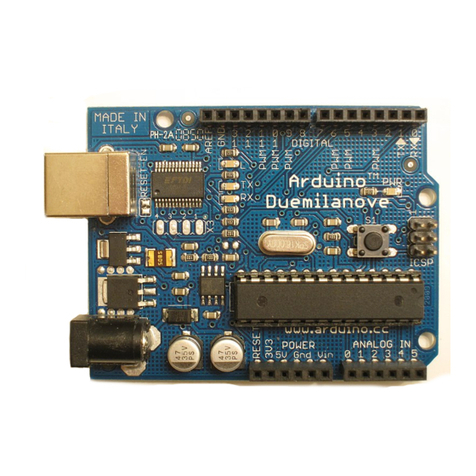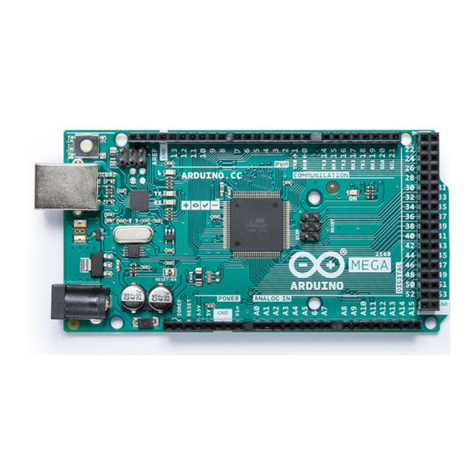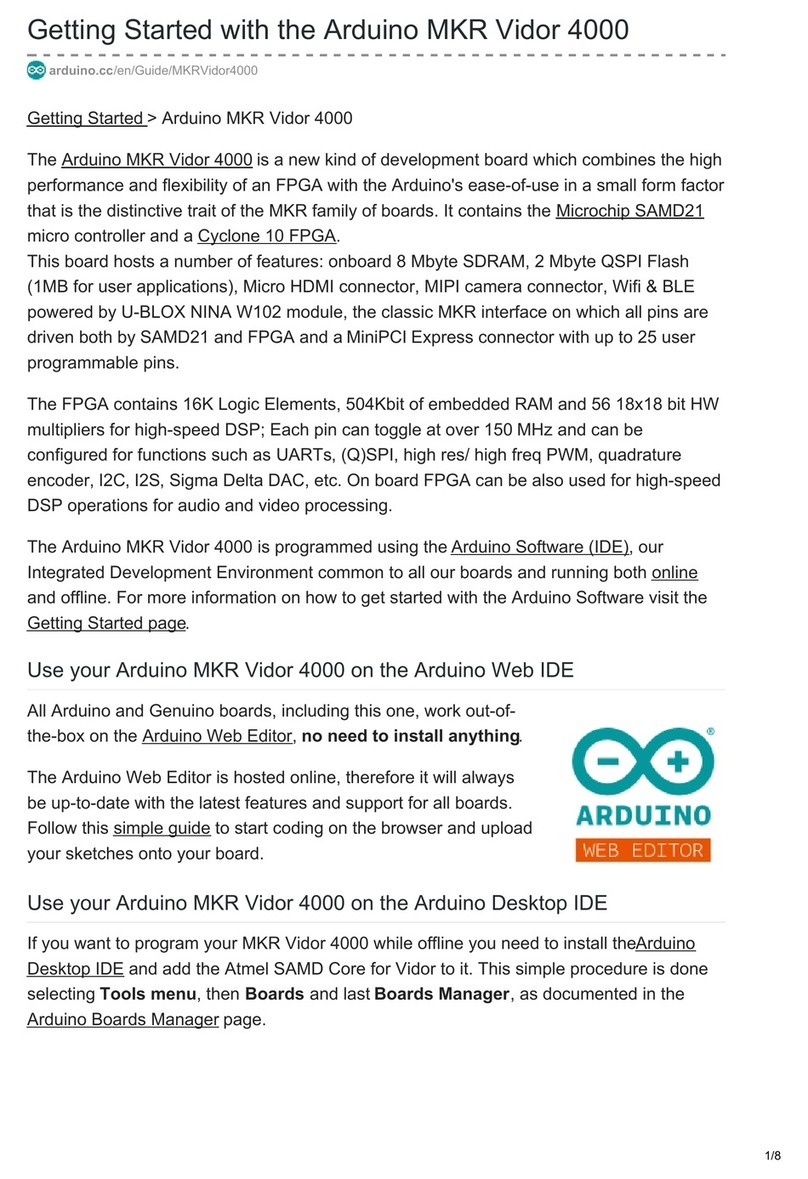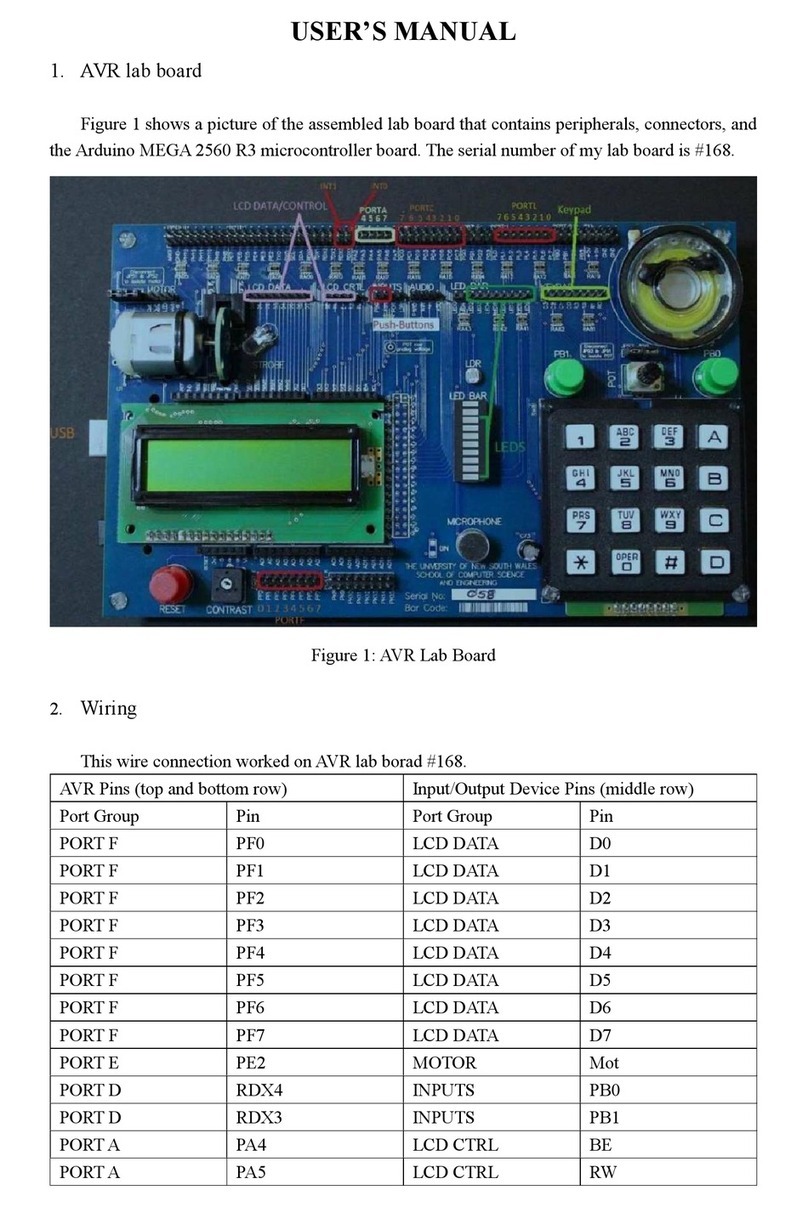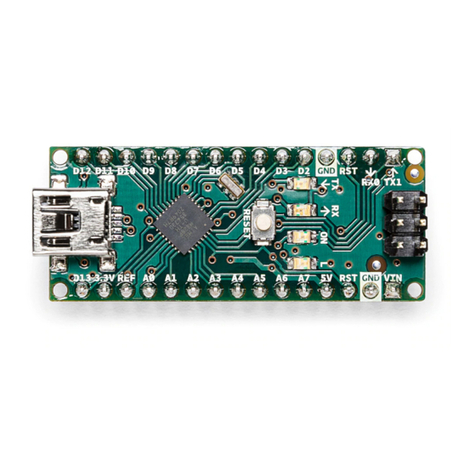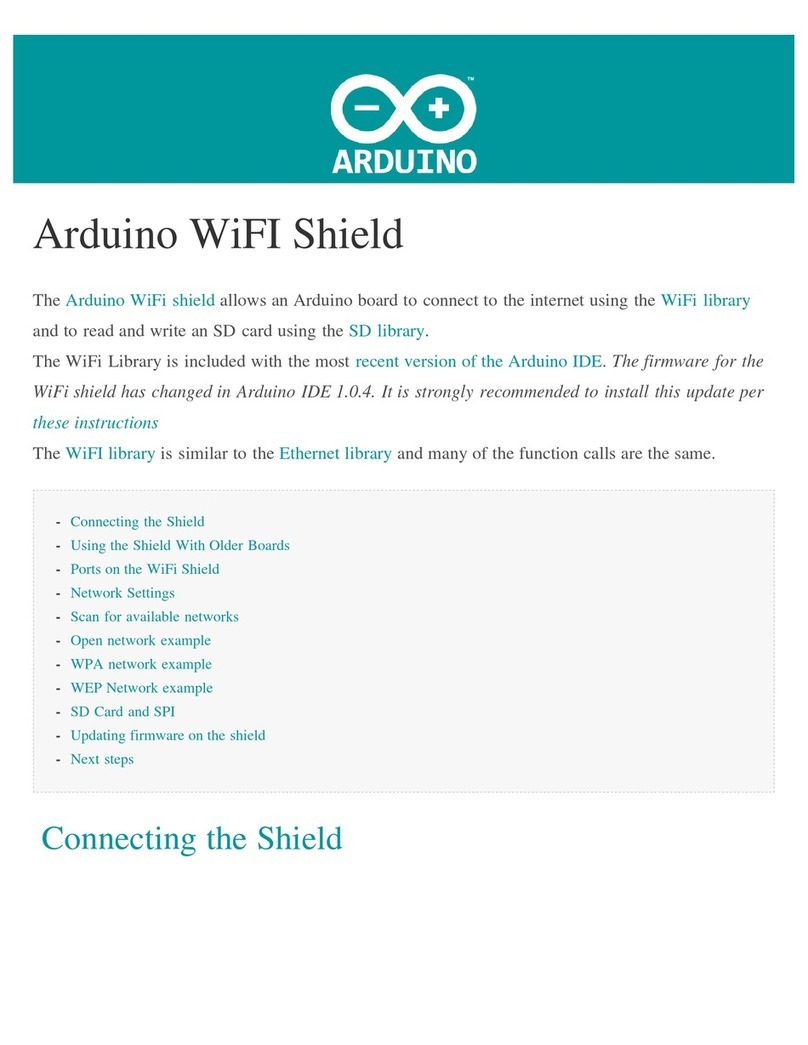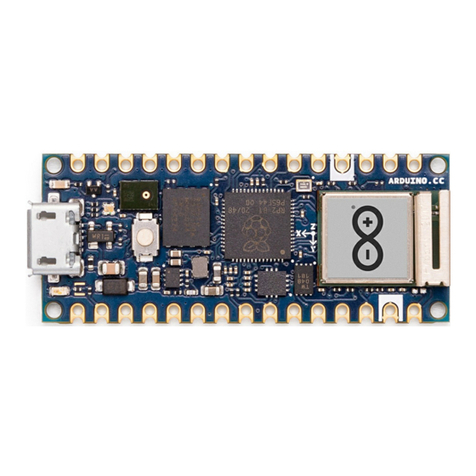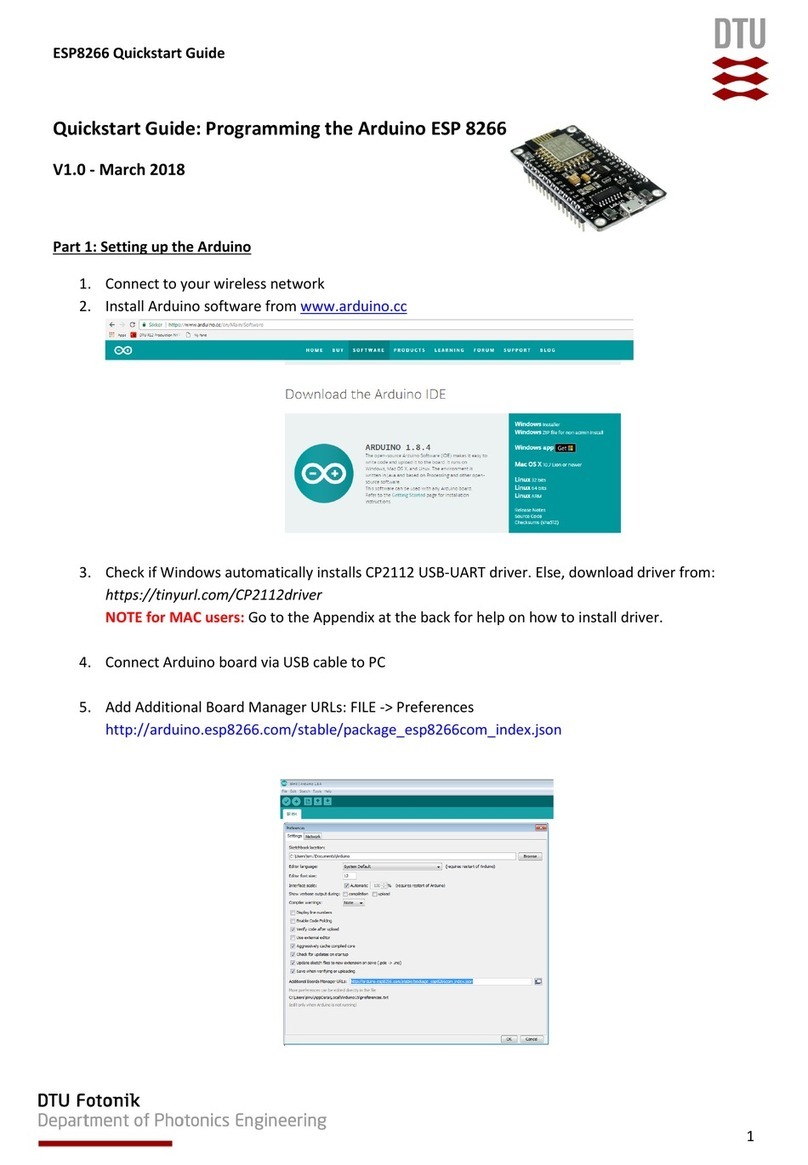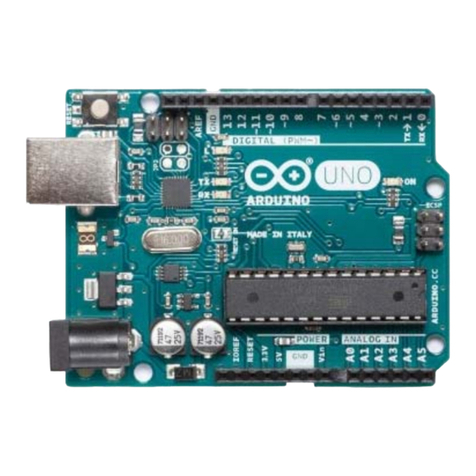6 NORA-W106-10B (Radio Module / MCU)
The Nano ESP32 features the NORA-W106-10B stand alone radio module, embedding an ESP32-S3 series SoC as
well as an embedded antenna. The ESP32-S3 is based on an Xtensa® LX7 series microprocessor.
6.1 Xtensa® Dual-Core 32bit LX7 Microprocessor
The microprocessor for the ESP32-S3 SoC inside the NORA-W106 module is a dual-core 32-bit Xtensa® LX7. Each
core can run at up to 240 MHz and has 512 kB SRAM memory. The LX7 features:
32-bit customized instruction set
128-bit data bus
32-bit multiplier / divider
Support for JTAG debugging
The LX7 has a 384 kB ROM (Read Only Memory), and 512 kB of SRAM (Static Random Access Memory). It also
features an 8 kB RTC FAST and RTC SLOW memory. These memories are designed for low-power operations,
where the SLOW memory can be accessed by the ULP (Ulta Low Power) coprocessor, retaining the data in deep
sleep mode.
6.2 Wi-Fi®
The NORA-W106-10B module supports the Wi-Fi® 4 IEEE 802.11 standards b/g/n, with an output power EIRP at up
to 10 dBm. The max range for this module is 500 meters.
802.11b: 11 Mbit/s
802.11g: 54 Mbit/s
802.11n: 72 Mbit/s max at HT-20 (20 MHz), 150 Mbit/s max at HT-40 (40 MHz)
6.3 Bluetooth®
The NORA-W106-10B module supports Bluetooth® LE v5.0 with an output power EIRP at up to 10 dBm and data
rates up to 2 Mbps. It has the option to scan and advertise simultaneously, as well as supporting multiple
connections in peripheral/central mode.
